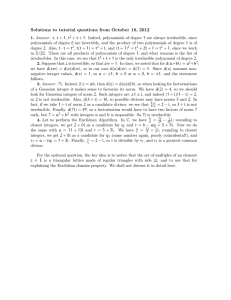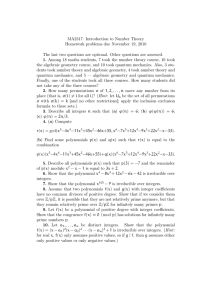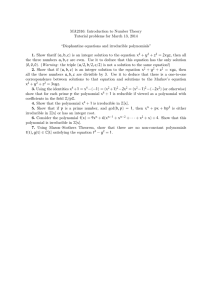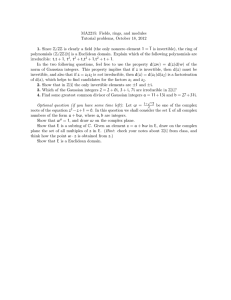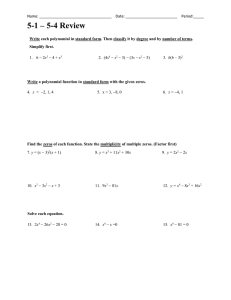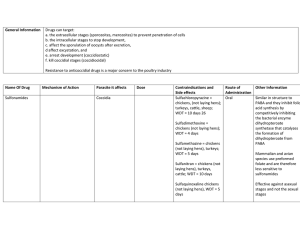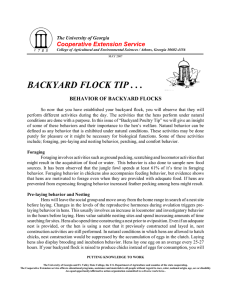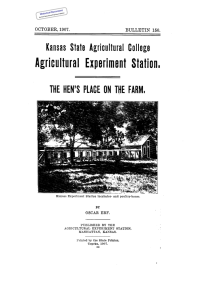MA2317: Introduction to Number Theory Tutorial problems, November 5, 2010
advertisement
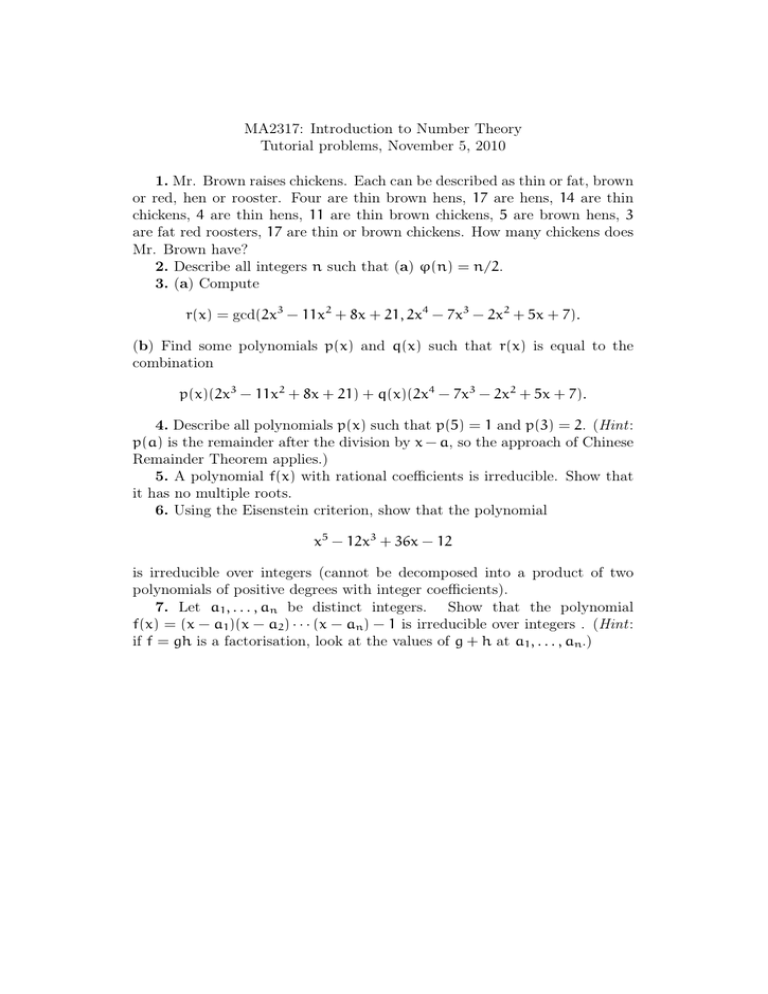
MA2317: Introduction to Number Theory Tutorial problems, November 5, 2010 1. Mr. Brown raises chickens. Each can be described as thin or fat, brown or red, hen or rooster. Four are thin brown hens, 17 are hens, 14 are thin chickens, 4 are thin hens, 11 are thin brown chickens, 5 are brown hens, 3 are fat red roosters, 17 are thin or brown chickens. How many chickens does Mr. Brown have? 2. Describe all integers n such that (a) ϕ(n) = n/2. 3. (a) Compute r(x) = gcd(2x3 − 11x2 + 8x + 21, 2x4 − 7x3 − 2x2 + 5x + 7). (b) Find some polynomials p(x) and q(x) such that r(x) is equal to the combination p(x)(2x3 − 11x2 + 8x + 21) + q(x)(2x4 − 7x3 − 2x2 + 5x + 7). 4. Describe all polynomials p(x) such that p(5) = 1 and p(3) = 2. (Hint: p(a) is the remainder after the division by x − a, so the approach of Chinese Remainder Theorem applies.) 5. A polynomial f(x) with rational coefficients is irreducible. Show that it has no multiple roots. 6. Using the Eisenstein criterion, show that the polynomial x5 − 12x3 + 36x − 12 is irreducible over integers (cannot be decomposed into a product of two polynomials of positive degrees with integer coefficients). 7. Let a1 , . . . , an be distinct integers. Show that the polynomial f(x) = (x − a1 )(x − a2 ) · · · (x − an ) − 1 is irreducible over integers . (Hint: if f = gh is a factorisation, look at the values of g + h at a1 , . . . , an .)
